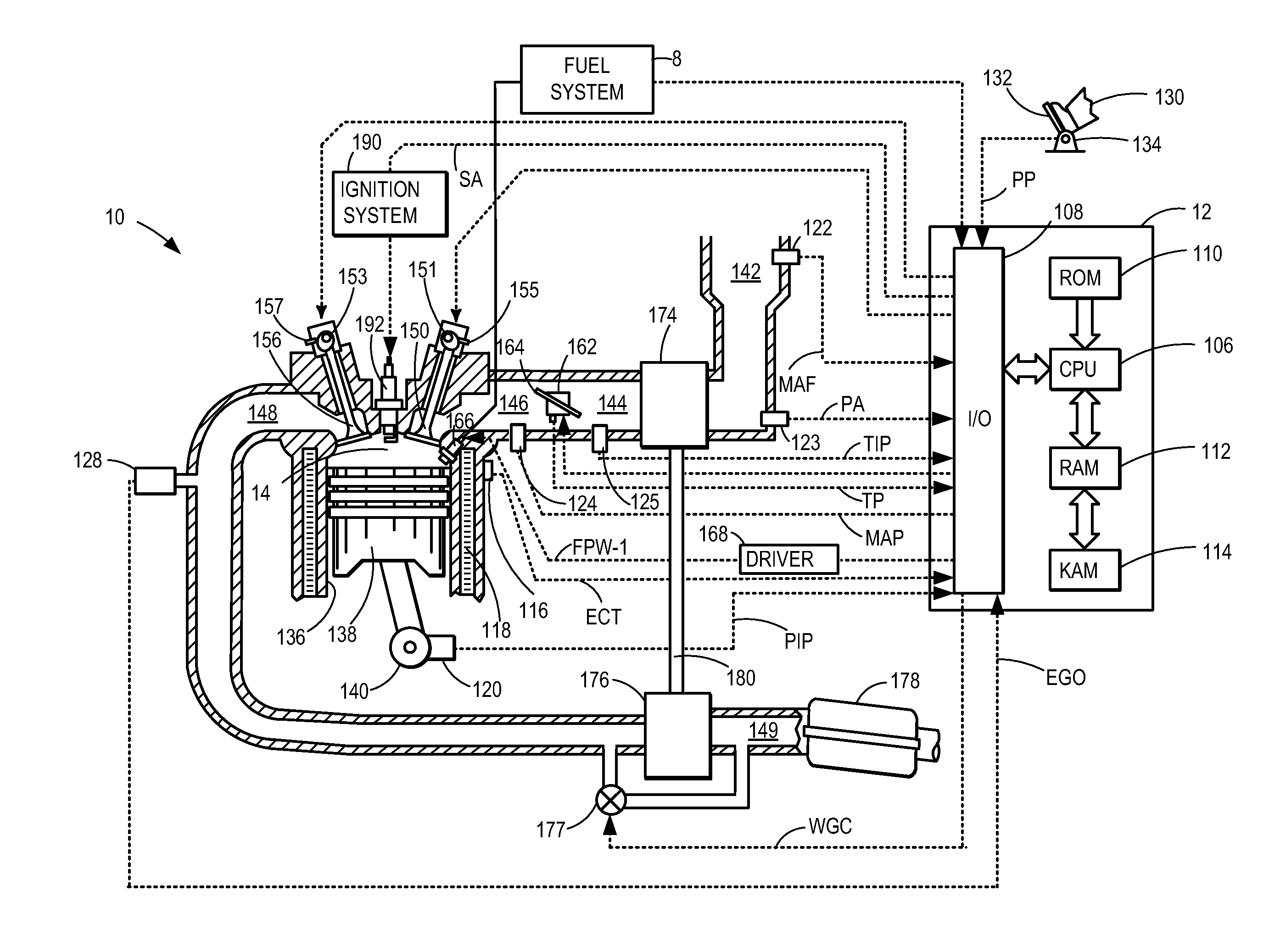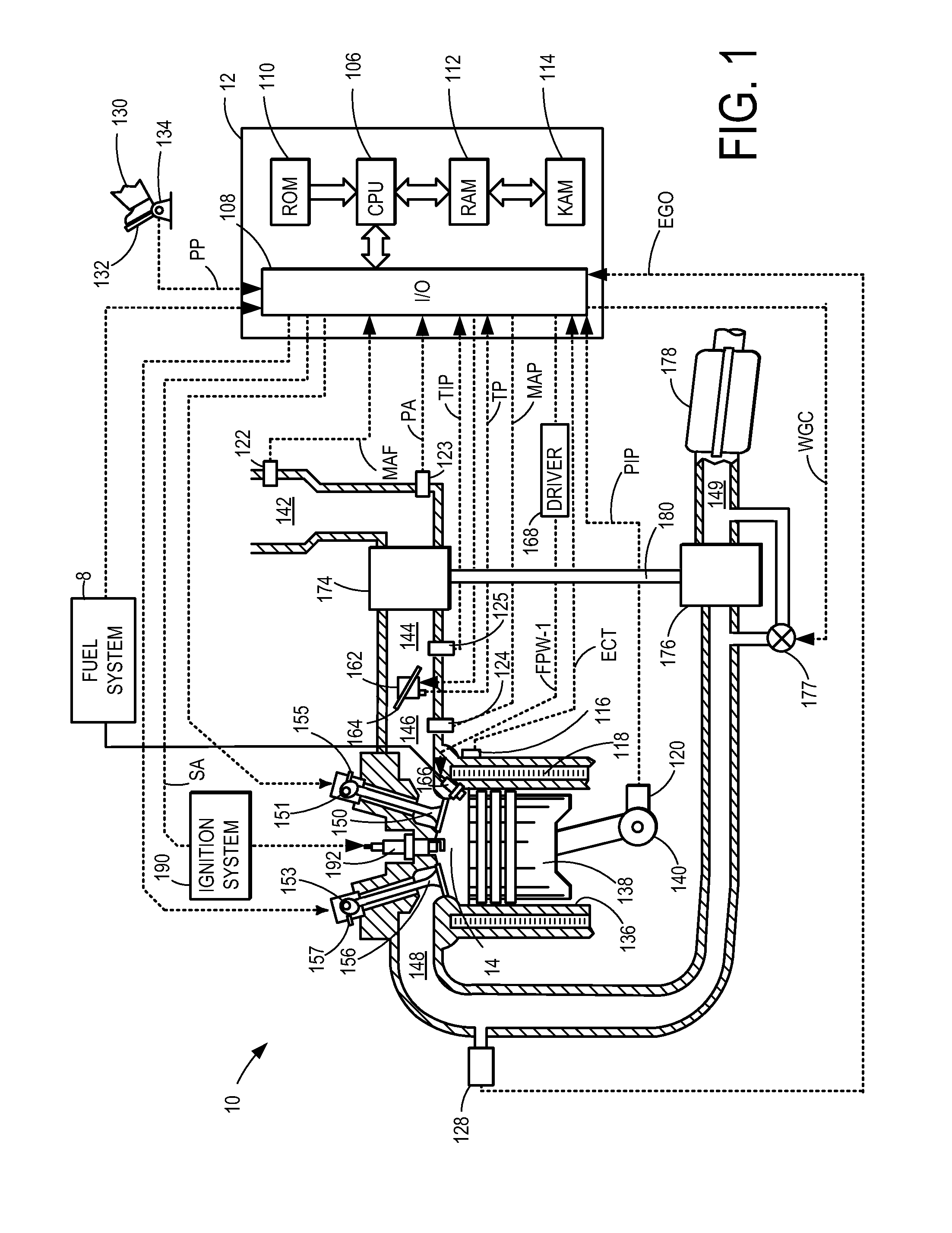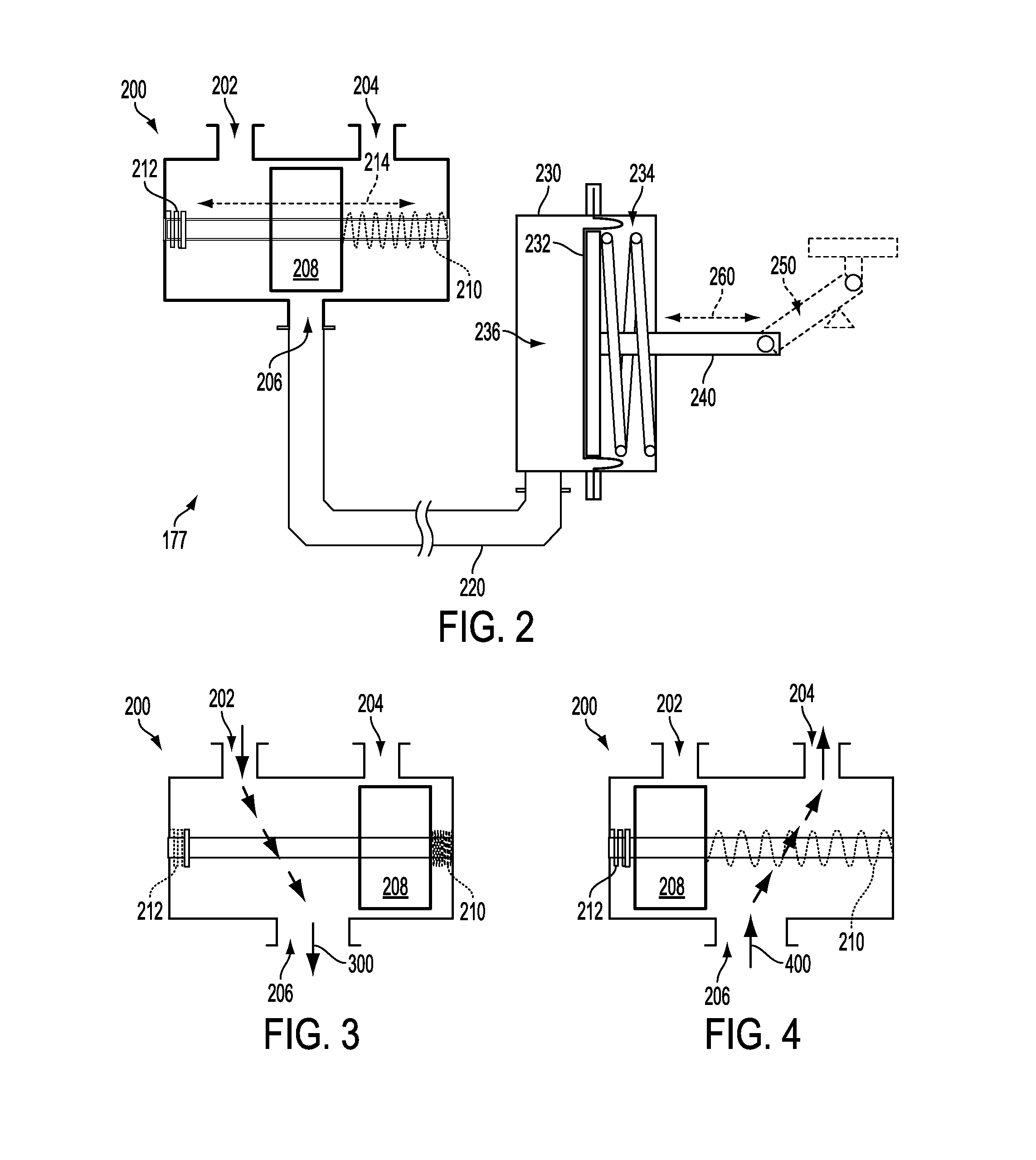Turbocharger control
a technology for turbochargers and control systems, applied in electric control, combustion engines, machines/engines, etc., can solve the problems of less predictable wastegate operation than desired, improve engine torque/power output density, increase the pressure in the intake manifold, and increase the flow of air into the engine.
- Summary
- Abstract
- Description
- Claims
- Application Information
AI Technical Summary
Benefits of technology
Problems solved by technology
Method used
Image
Examples
Embodiment Construction
[0011]The following description relates to systems for controlling turbochargers of internal combustion engines via a wastegate. An example embodiment of an engine with a turbocharger including a wastegate is illustrated in FIG. 1. In the example configuration, the force for actuating the wastegate is provided by the boost pressure.
[0012]The example wastegate is shown in more detail in FIG. 2. The example wastegate comprises a solenoid valve and a wastegate canister. In FIGS. 3 and 4, the solenoid valve is shown in two positions to illustrate how the solenoid valve may be used to control the pressure of the wastegate canister. FIG. 5 illustrates prophetic data of wastegate canister pressure when the solenoid valve is modulated as described in FIGS. 3 and 4. A force generated by the wastegate canister pressure may be used to actuate the wastegate valve to control the turbocharger. The wastegate of FIG. 2 may be adjusted using a control routine, such as illustrated in FIGS. 6 and 7, f...
PUM
 Login to View More
Login to View More Abstract
Description
Claims
Application Information
 Login to View More
Login to View More - R&D
- Intellectual Property
- Life Sciences
- Materials
- Tech Scout
- Unparalleled Data Quality
- Higher Quality Content
- 60% Fewer Hallucinations
Browse by: Latest US Patents, China's latest patents, Technical Efficacy Thesaurus, Application Domain, Technology Topic, Popular Technical Reports.
© 2025 PatSnap. All rights reserved.Legal|Privacy policy|Modern Slavery Act Transparency Statement|Sitemap|About US| Contact US: help@patsnap.com



